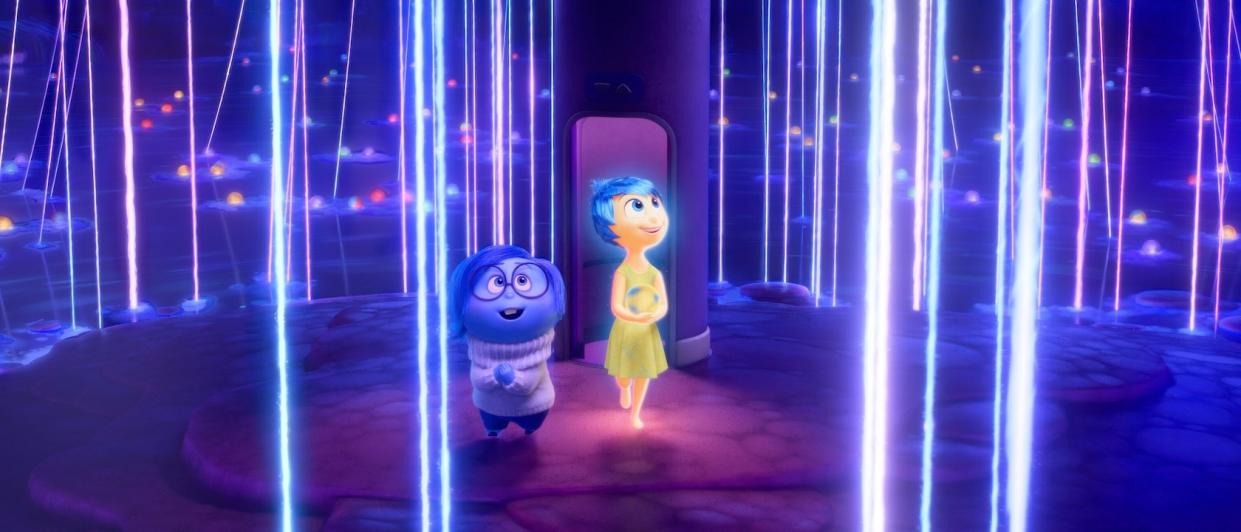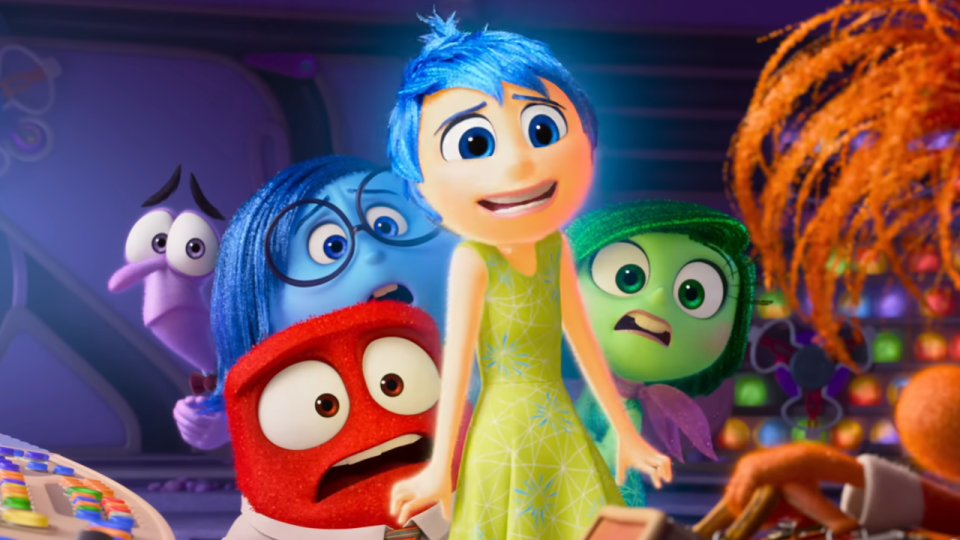Inside Out 2 Review: A New Flood Of Emotions Enhances One Of Pixar’s Best Ideas

Inside Out 2

Release Date: June 14, 2024
Directed By: Kelsey Mann
Written By: Dave Holstein & Meg LeFauve
Starring: Amy Poehler, Phyllis Smith, Lewis Black, Tony Hale, Liza Lapira, Maya Hawke, Ayo Edebiri, Adèle Exarchopoulos, Paul Walter Hauser, Kensington Tallman, Diane Lane, Kyle MacLachlan
Rating: PG for some thematic elements
Runtime: 96 minutes
Since Pixar’s first feature film steps with Toy Story back in 1995, the animation studio has been bringing imagination and cleverness to the ordinary. We’ve never looked at toys, bugs, rats, fish or cars the same way again since Pixar had something to say about them. But arguably one of the studio’s best (and most influential) stories remains 2015's Inside Out. When writer/director Pete Docter gave faces and personalities to the core five emotions within us all, he and the other filmmakers told a wholly universal and often too real story that illustrated the answer to a question we’ve all had many times over: "What’s going on in our heads?" Nearly a decade later, Pixar’s sequel to Inside Out is here, and I know, you’re curious about the answer to this one: "Will Inside Out 2 make you ugly cry again?" Yes, but maybe not in the same way it did the first time.
Inside Out 2 marks the first sequel from Pixar in five years following a slew of original, but sadly underrated movies from the studio, most of which were not theatrical events. Unlike Toy Story 4 feeling like it overstayed the franchise’s welcome by giving Buzz and Woody a second ending for some reason, Pixar found a truly great reason to return to Riley’s mind for this sequel. Joy and the gang are here for us to feel all the feels, laugh at Pixar’s inventive, pounding warm and fuzzy heart, and appreciate an even deeper world that was first established in the modern classic.
Inside Out 2’s mind is sharper and more mature as it follows a new phase of Riley’s life.
Riley Anderson is only one year older than she was in the original Inside Out for 2, and it doesn’t take long to realize she’s maturing. This film has done so with her. The sequel opens by taking audiences in the inner corners of Riley's head for her latest school hockey game. Instantly, we’re brought into the quick-witted dialogue as the animated movie bounces between reality and the 13-year-old balancing her emotions through the thrilling opening sequence. Riley’s mind has never looked better, with Pixar’s award-winning animation sparkling on the big screen with the filmmakers’ stunning attention to detail you want to memorize every frame of. It’s a joy to the senses to see Riley actually having imperfections on her face (as most 13-year-olds do) or Joy having glow-in-the-dark stars next to her bed – because of course she does!
Inside Out 2’s 96-minute runtime breezes by as it once again takes a quite ordinary few days in Riley’s life and turns it into a full-blown epic adventure occurring mainly inside her noggin. On the outside, Riley is going to a hockey camp ahead of transitioning to high school, but on the inside, she’s just started puberty, and that means a lot of changes are occurring. The life event is illustrated as a massive red button in her mind’s console that wakes up the emotions in the middle of the night by flashing profusely before more chaos begins to break loose in her brain. This is best exemplified by the entrance of four new emotions: Anxiety (Maya Hawke), Envy (Ayo Edebiri), Ennui (Adèle Exarchopoulos) and Embarassment (Paul Walter Hauser).
Each of them feel like perfect encapsulations of the emotions, whether it's Embarrassment always hiding himself deeper under his hoodie or Edebiri’s li'l ball of adorableness widening her eyes at everything she’s not. Tt’s a blast to see Pixar once again bring some zaniness to everyday feelings, and as the first movie masterfully did, Riley's experiences are broad enough for many to relate to.
The sequel finds a formidable foe in anxiety.
As it was perhaps easy to guess by the movie’s marketing, Anxiety is the biggest threat to Riley’s changing mind in Inside Out 2. Between Maya Hawke’s fast-talking portrayal of its voice and some real braininess from the animators, Anxiety makes plans to take over in ways that sabotages what Joy has been doing as the center of her mind thus far. Inside Out 2 has carefully translated the emotion into a complicated villain that seems to have Riley’s best interests at heart – to keep her away from danger, but has misguided ways of going about doing so. It's intriguing to see Pixar develop into the world they’ve already built in the first movie.
Not only is the rise of Anxiety in Riley’s mind very entertaining to see shake up the foundation of the first five emotions' quarters, it feels like in doing so Inside Out 2 is providing something important to pop culture for generations to come. Just as Sadness and Joy’s tension allowed us in the first movie to reconcile our own relationships with the two powerful emotions, Anxiety’s rampage offers awareness and valuable insight about the self-sabotage involved when worries about the future can control one’s lives.
Inside Out 2 doesn’t fully live up to the impact of the original, but that’s OK.
Inside Out had two huge messages that will remain in many of our core memories forever: don’t push aside your sadness, as it’s important too, and childhood innocence is impermanent (we miss you, Bing Bong!) There’s a rawness about the lessons that Riley Andersen learned in the first movie that will remain the closest because it was the first time we watched Pixar translate our brains into an animated masterpiece. We’ve seen Pixar pull off this magic trick before, so it's just a smidge less powerful, but that doesn’t undercut the depth of what Inside Out 2 decides to delve into this time.
Yes, this sequel can’t escape adventuring down some familiar neural pathways of the first movie in a way that feels familiar and even repetitive at times, but there’s also a slew of new ideas and expansiveness to the beloved characters here that feels like a comeback to form we’re nostalgic for from Pixar… on the big screen, anyway.
What a glorious tool it is for audiences of all ages to take time to see emotions in front of you and recognize them each for their flaws and strengths. It's beautiful to know that both Inside Out movies can live inside our collective brains rent-free to, if anything, remind us of the collective adventures of mixed emotions constantly going on in each of our own heads.

 Yahoo News
Yahoo News 
